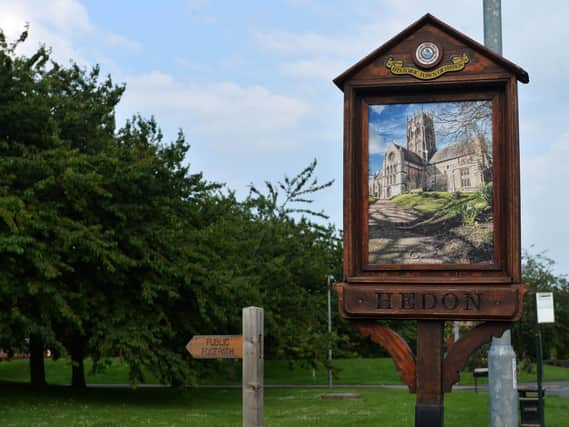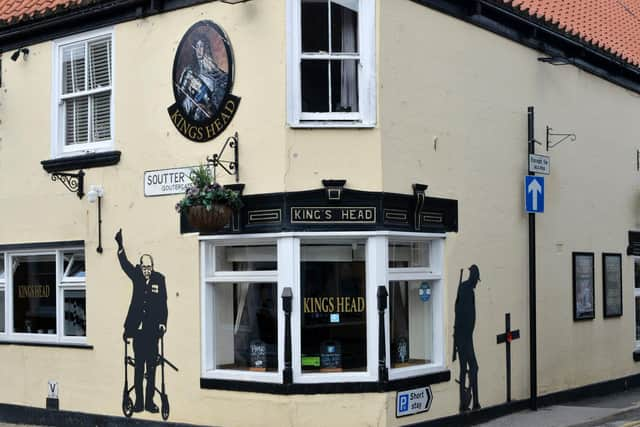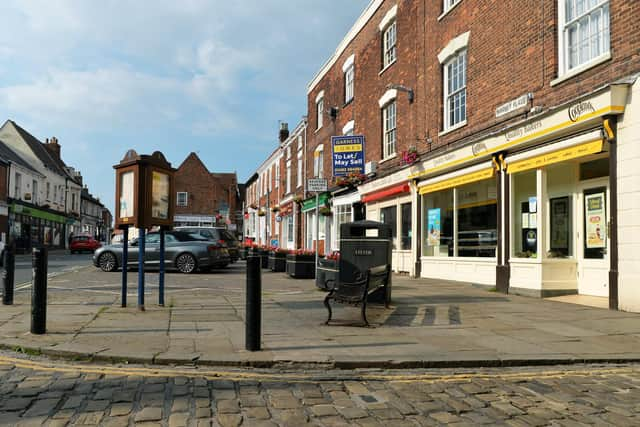Hedon - the quiet Yorkshire town once home to a royal mint and an airport


Even the most fiercely defensive resident of the small Holderness town of Hedon would probably admit that their home meets every criteria of the epithet “sleepy market town”. There is a busy main street, a handsome parish church, a plethora of independent shops and, of course, a weekly market.
This simplistic description, however, belies a history that has seen the town act as a busy port, the key settlement of the area, a royal mint, a noted centre for aviation and even the scourge of parliament. Clearly, Hedon wasn’t always quite so sleepy.
Advertisement
Hide AdAdvertisement
Hide AdThe town was founded around 1130 by “The Fat One” – William Le Gros, Earl of Aumale and Lord of Holderness, as a port to serve his seigniory on the north bank of the Humber.


The town’s name derives from the Saxon word Heda, meaning haven, and it was Hedon Haven – on Humbleton Beck, also known as The Fleet – that provided sought-after safe mooring for boats. The Haven (a minor tributary of the Humber) allowed river traffic to carry goods further inland without being held up on the land surrounding the town, which would often turn marshy in bad weather.
Within 30 years, the port had proven so successful that the town was granted a charter by Henry II, allowing the residents (or burgesses) of Hedon to trade freely in goods and property. The town grew quickly, with streets, unusually for the time, designed in the simple grid system that survives to this day.
Beyond port traffic, little is known about industry in Hedon before 1300. Street names and archaeological finds suggest wool, hides, cloth dyeing and agriculture seem to have been staples. What is known is that, in 1153, a royal mint was created in the town.
Advertisement
Hide AdAdvertisement
Hide AdIt produced silver pennies featuring an image of Norman king Stephen – who was a grandson of William the Conqueror – with a sceptre in his hand and an inscription indicating the coins were struck by someone called “Gerard” in the town of Hedon. Just three of these coins are known to exist today, with one being housed in the Hedon Silver Collection in the Town Hall.


At the heart of the town is the large, gothic St Augustine’s Church. Known as the King of Holderness (St Patrick’s church in nearby Patrington is dubbed the Queen), parts of the building date from 1190 but it wasn’t actually finished for another 250 years.
Perhaps the most striking feature of the church is the beautiful stained-glass windows representing Christ in Majesty and St Augustine of Hippo, both of which were incorporated during a restoration undertaken by rector the Rev W Wasse in the latter part of the 19th century and which still look very impressive to this day.
In 1547, Hedon sent its first two burgesses (or freemen) to serve as Members of Parliament in Westminster. In subsequent years there was a pattern of increases in the number of freemen registered in Hedon but, suspiciously, only in election years. It transpired that just a quarter of these freemen actually lived in the town and most bought the privilege to vote for 200 guineas.
Advertisement
Hide AdAdvertisement
Hide AdConsequently, by the mid-17th century, Hedon was generally considered a rotten borough. Despite some honourable petitioning (for instance, calling for the abolition of slavery in 1824 and 1830), it was disenfranchised in the Reform Act 1832 and lost its right to send representatives to parliament. These days, the town falls within the constituency of Beverley and Holderness.
One undeniable good that Hedon’s MPs achieved during their time representing the town was to get an Act of Parliament passed to improve port facilities at the Haven. The growth of the docks at Hull, however, and larger ships increasing the demand for more substantial, deeper ports meant that the Haven eventually lost most of its trade to its rapidly-expanding neighbour. The port ended up serving only a few barges and then, finally, was allowed to silt up and become unnavigable. The main reason Hedon existed in the first place was gone.
The arrival of the railways saw Hedon gain a station to the north of the town, on the line between Hull’s Victoria Dock and the seaside town of Withernsea. This was primarily intended to serve the racecourse and lasted around a century before being reduced to a goods service only after the Beeching Report in 1964 and closed altogether just four years later.
The worldwide growth of commercial flight in the late 1920s, along with the great industrial success of Hull, presented Hedon with the opportunity to bring the new method of travel to the town.
Advertisement
Hide AdAdvertisement
Hide AdHull Corporation wanted to build a municipal airport similar to those in places like Liverpool and Manchester and eventually settled on the former racecourse to the west of Hedon as the ideal location. The site had already been hosting events demonstrating the power of flight for almost 20 years. Noted pilot Gustav Hamel flew a monoplane over the racecourse as early as 1912 and this was followed, 12 years later, by a display by the marvellously-named Bentfield C Hucks.
Hedon Aerodrome – also known as Hull International Airport – opened in October 1929, with an air pageant attended by over 100,000 people. Commercial flights finally began in 1933, with services run by KLM from Amsterdam to Liverpool using Hedon as a stopover.
Arguably the aerodrome’s finest hour came when local aviation heroine Amy Johnson landed in Hedon on returning from her record-breaking solo flight to Australia. In her plane, called Jason, Johnson became the first woman to achieve the 11,000-mile trip and her decision to return in triumph to her home town meant the cameras of the international press were temporarily trained on Hedon. Jason is now on permanent display in London’s Science Museum.
Despite the airport eventually offering flights to Belfast, the Midlands, and the south coast (services reached as far as Newquay in Cornwall), there didn’t prove enough trade to support the expense of running the planes and the aerodrome.
Advertisement
Hide AdAdvertisement
Hide AdDespite reducing travel time from several hours to 15 minutes, even short hops to Grimsby and North Lincolnshire proved unprofitable and all services stopped in February 1939. The proximity of the airport to the chemical plant at nearby Saltend meant that the facility couldn’t be utilised by the military during the Second World War and so the land was covered in piles of old cars to prevent enemy planes landing there. After the war, the site was briefly turned into a speedway track before eventually becoming grazing land for cattle.
In recent decades, Hedon has settled into its role as a sleepy market town but is seeing a gradual increase in population and affluence, thanks mainly to the presence of the BP chemicals plant in Saltend and the arrival of the Siemens turbine blade manufacturing facility next door.
Both firms either own properties in Hedon (which are used by visitors to the plants) or houses are being bought by new employees of what is turning into a vital green port. Almost a thousand years after the water of the Humber facilitated the creation of Hedon, the wind blowing across the North Sea is providing the town with both prosperity and people.
Support The Yorkshire Post and become a subscriber today. Your subscription will help us to continue to bring quality news to the people of Yorkshire. In return, you'll see fewer ads on site, get free access to our app and receive exclusive members-only offers. Click here to subscribe.